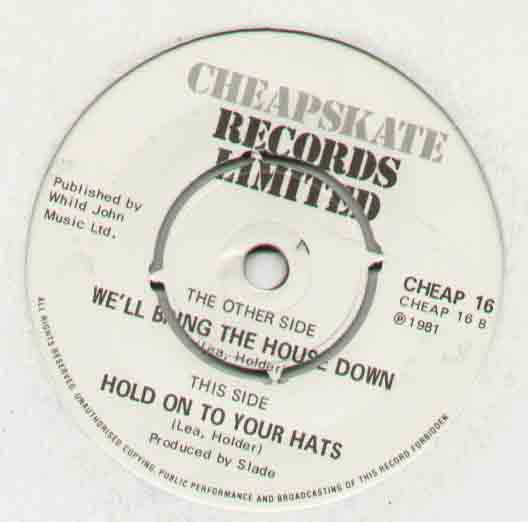It may seem a bit strange, but I've always regarded Motorhead as a singles band. Maybe this is because when I was first starting to buy records and follow the charts they were regularly up there in the Top 10, duking it out with Blondie, Abba and the other big names of the period. Don't believe me? Well have a look at the copy of Top of the Pops above where an outlay of a few pounds you could listen to cover versions of Super Trouper, Woman in Love and ... Ace of Spades (I'd love to hear that cover version by the way, has anyone got it?). Then, have a look at their chart record between Dec 1979 early 1982; not many other bands had a 1980 and 1981 as good as Motorhead.
Dec 1979 Bomber (34)Looking back, one of the more enjoyable aspects of that period was that metal bands were quite prepared to do the publicity circuit in order to sell their records. There was very little of the sullen "we're too cool for this sort of thing" that came in later. So you had Judas Priest miming to Hot Rockin' on kids show Razzamatazz, AC/DC live on duff live show Rock goes to College, and best of all, Motorhead and Girlschool, appearing on Saturday morning's Tiswas. You can see Lemmy and Denise playing the custard pie game in the clip below.
May 1980 The Golden Years EP (8)
Nov 1980 Ace of Spades (15)
Feb 1981 St Valentine's Day Massacre (5)
Jul 1981 Motorhead Live (6)
Apr 1982 Iron Fist (29)
Eventually, the hits dried up for Motorhead. Part of this was due to changing tastes: Rainbow, Thin Lizzy, Judas Priest and Whitesnake were all in the Top 20 in the same years as Motorhead, but only David Coverdale would return there in later years. But a large part was due to Motorhead themselves; Iron Fist was a ham-fisted follow-up to Ace of Spades and as the 80s went on, Lemmy started knocking around with the Comic Strip comedians, appearing in their TV shows and films. It's hard not to think that the band lost momentum. Here they are at the height of their fame, performing Please Don't Touch with Girlschool on Top of the Pops in February 1981.




